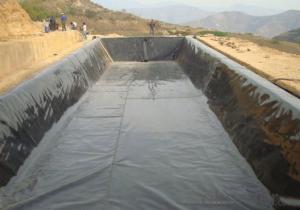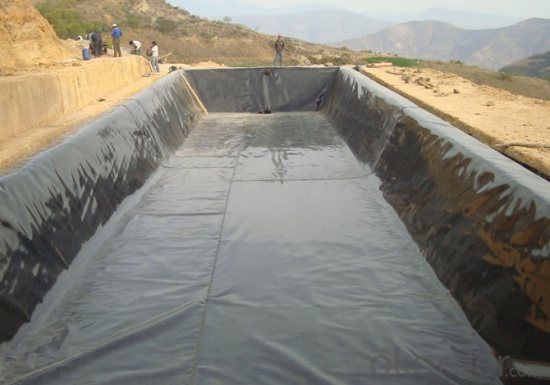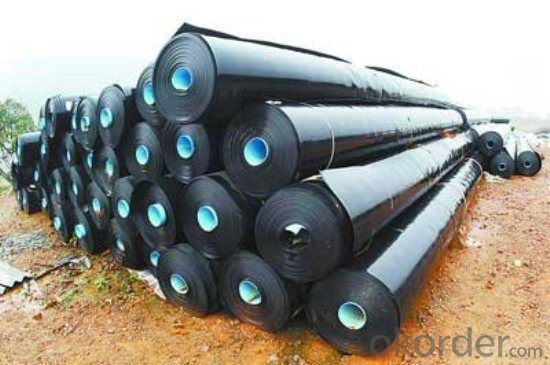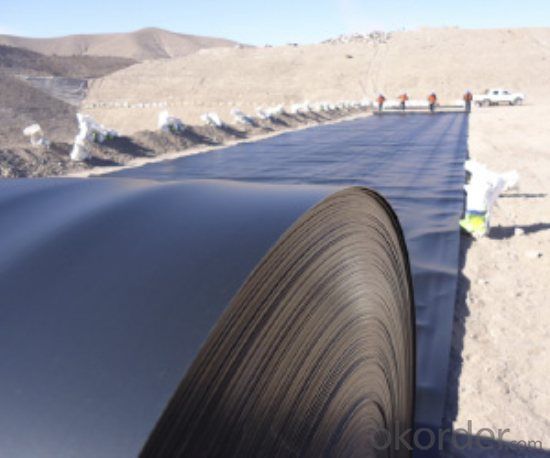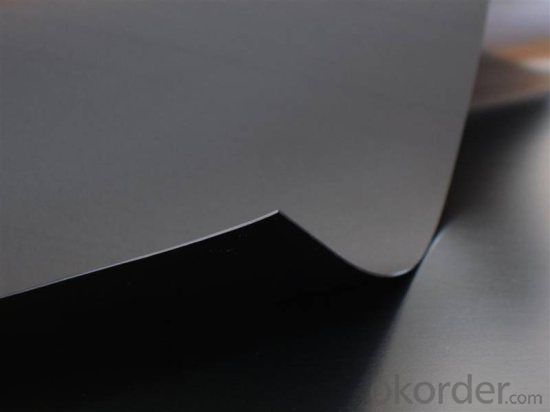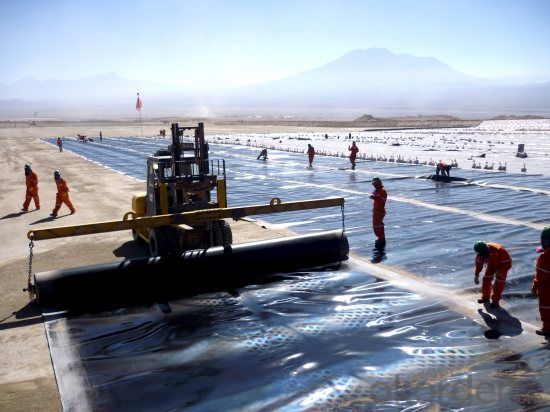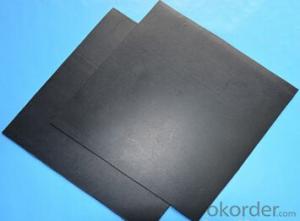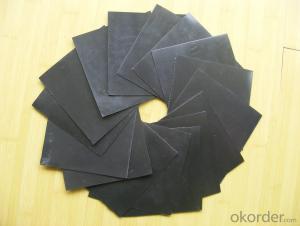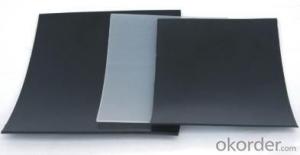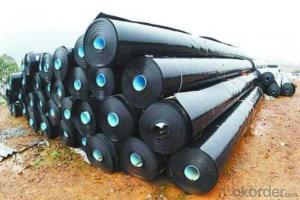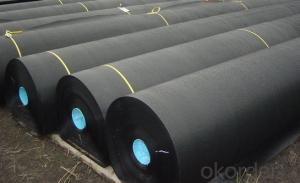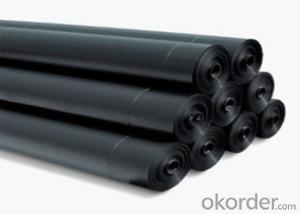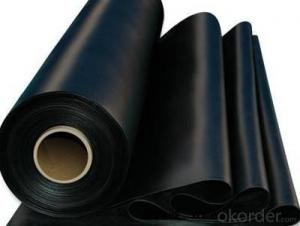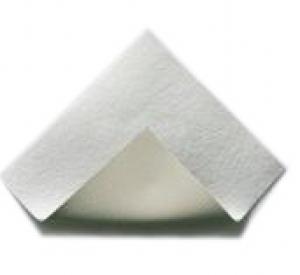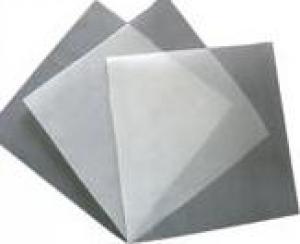Geomembrane Thickness 2.5MM for Architectural Engineering
- Loading Port:
- Qingdao
- Payment Terms:
- TT or LC
- Min Order Qty:
- 8000 m²
- Supply Capability:
- 100000 m²/month
OKorder Service Pledge
OKorder Financial Service
You Might Also Like
Geomembrane for Architectural Engineering
Description Of Geomembrane for Architectural Engineering
Geomembrane, as water-proof plate, is made from polymer materials like polyethylene, through blow molding.
Main Features of Geomembrane for Architectural Engineering
By its raw materials - molecular structure, Polyethylene (PE) geomembrane is divided into low-density polyethylene (LDPE) geomembrane, linear low density polyethylene (LLDPE) geomembrane
Applications of Geomembrane for Architectural Engineering
1. HDPE geomembrane is applicable to environmental protection and sanitation: such as landfill, sewage treatment plant, power plant adjustive pool, industrial, hospital solid waste;
2. HDPE geomembrane is applicable to hydraulic engineering: such as seepage control, plugging, reinforcement for rivers, lakes and reservoirs and dams, drainage seepage control, vertical core wall, slope protection, etc.
3. LDPE geomembrane's applications in municipal engineering: subway, underground works of the building, planting roof, roof garden, sewage pipe seepage control;
4. Polyethylene impermeable membrane is applicable to the garden: artificial lake, river, reservoir, golf course pond bottom, slope, green lawn waterproofing and damp-proofing;
5. High density polyethylene geomembrane is applicable to petrochemical industry: chemical plant, oil refinery, storage tank seepage control, chemical reaction cell, lining and secondary lining for sedimentation tank, etc.
IMages of Geomembrane for Architectural Engineering
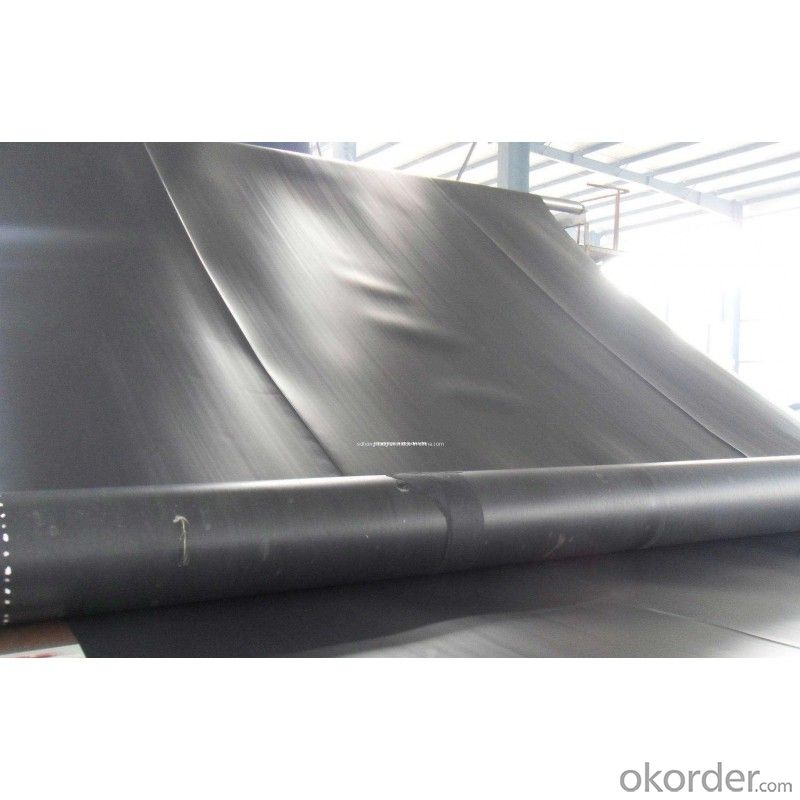

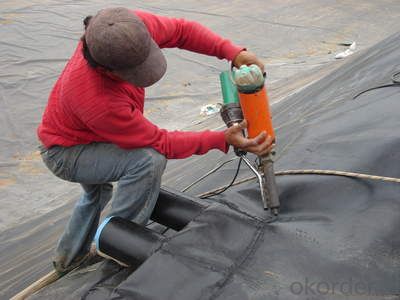

FAQ:
1. What are we supplying?
We are specialized in producing , geocell, geogrid, geomembrane
2. How Many years experience do we have?
We have been exported to more than 15 countries in the past 10 years.
3. How long do we usually reply your request?
We always reply our customer within 12 hours.
- Q: Are geomembranes suitable for use in mining heap leach pads?
- Yes, geomembranes are suitable for use in mining heap leach pads. They provide an effective barrier to prevent the loss of valuable leach solutions and minimize environmental impacts by preventing the contamination of groundwater. Geomembranes are highly resistant to chemical and physical degradation, making them an ideal choice for lining heap leach pads in mining operations.
- Q: Are geomembranes resistant to thermal expansion and contraction?
- Yes, geomembranes are resistant to thermal expansion and contraction. They are designed to withstand temperature variations without significant dimensional changes, ensuring their stability and integrity in various environmental conditions.
- Q: Can geomembranes be used in geotechnical applications?
- Yes, geomembranes can be used in geotechnical applications. Geomembranes are impermeable liners made from synthetic materials, such as HDPE or PVC, and are commonly used for containment purposes in various geotechnical applications including landfill liners, reservoirs, mining operations, and environmental protection projects. They provide effective barrier properties against water, chemicals, and contaminants, making them suitable for preventing seepage and pollution in geotechnical structures.
- Q: Preparation of composite geomembrane precautions?
- 1, laying the ground to be flat, not allowed to have stones, bricks and hard objects, to avoid uneven subsidence, cracks, anti-seepage within the turf, roots have to clear. 2, composite geomembrane laying do not pull too tight, should leave a certain amount of expansion and contraction to adapt to the matrix deformation. 3, composite geomembrane construction can be embedded using embedded: cover thickness should not be less than 30cm, according to different circumstances, can also be used anchor nails fixed. 4, composite geomembrane laying in the filling, should avoid the stones, heavy objects directly hit the composite geomembrane, the best side of the construction, while laying, while covering the protective layer. 5, composite geomembrane lap should avoid the slope, preferably in the flat or embankment at the bottom. 6, composite geomembrane in the laying should avoid dragging, hard pull, to avoid sharp objects stabbed.
- Q: Can geomembranes be used for golf course irrigation ponds?
- Yes, geomembranes can be used for golf course irrigation ponds. Geomembranes are impermeable liners that can effectively contain water and prevent seepage, making them suitable for constructing and lining irrigation ponds on golf courses.
- Q: Are geomembranes suitable for use in wildlife habitat restoration projects?
- Yes, geomembranes are suitable for use in wildlife habitat restoration projects. These impermeable liners act as barriers, preventing contaminants from leaching into the soil and water, which helps maintain a clean and healthy habitat for wildlife. Geomembranes also provide erosion control, stabilize slopes, and can be used to create ponds or wetlands that support various species.
- Q: How many squares are 12 tons of geomembrane?
- It depends on the thickness by 21 m * 4 m, about 100 volumes, piled up about 30
- Q: What kind of mobile phone stick membrane is good?
- PP material is a good mobile phone stick membrane. mobile phone stick membrane is also known as mobile phone decoration film and mobile phone packaging film. it can be used for mounting the mobile phone body surface, screen and other tangible objects of a cold mounting film, with various types, mobile phone stick membrane is not only confined to the mobile phone, it can also used in MP3, MP4, computer screen, mouse, loudspeaker box and any objects which need be protected, because it is originally widely used in mobile phone decoration, hence it get the name "mobile phone stick membrane", because the mobile phone stick membrane is mounted on the mobile phone, which can take on an altogether new aspect of bright, not only it can play the effect of renovating the old machine, but also can be waterproof, prevent dirt from entering into the keyboard, screen, playing the role of protection, so it is also known as the mobile phone decoration film, mobile phone packaging film.
- Q: Can all-purpose adhesive stick composite geomembrane?
- The best way to stick composite geomembrane is to weld with sweat soldering machine or monorail welding gun. If there is no such device on the construction site, you can brush PE adhesive, or use all-purpose adhesive. Brushing must be uniform, and sticking should be close and tight. Brushing surface must be kept clean without water or mud. Brushing all-purpose adhesive is relatively expensive.
- Q: Are geomembranes resistant to fungal growth?
- Yes, geomembranes are generally resistant to fungal growth. They are designed to be impermeable to water and other liquids, which creates an unfavorable environment for fungal growth. Additionally, many geomembranes are made from materials such as high-density polyethylene (HDPE) or polyvinyl chloride (PVC) that are inherently resistant to fungal growth. However, it is important to note that proper installation and maintenance are crucial to ensuring long-term resistance to fungal growth.
Send your message to us
Geomembrane Thickness 2.5MM for Architectural Engineering
- Loading Port:
- Qingdao
- Payment Terms:
- TT or LC
- Min Order Qty:
- 8000 m²
- Supply Capability:
- 100000 m²/month
OKorder Service Pledge
OKorder Financial Service
Similar products
Hot products
Hot Searches
Related keywords
